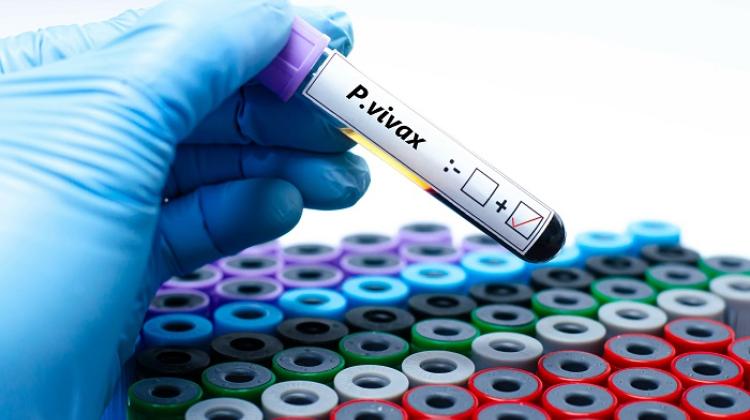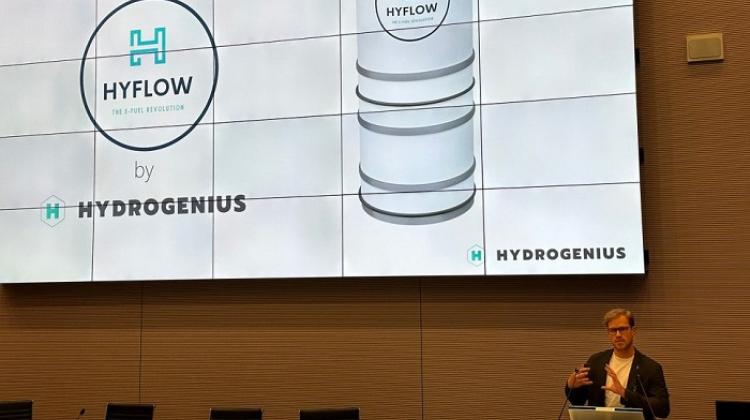Students of Warsaw University of Technology designed a supersonic rocket
 Students from the Rocket Section of Students' Space Club at Warsaw University of Technology, presented in Warsaw supersonic rocket H1 on Amelia 2 launcher (in the box), a few days before launch. Photo: PAP/Rafał Guz 25.09.2015.
Students from the Rocket Section of Students' Space Club at Warsaw University of Technology, presented in Warsaw supersonic rocket H1 on Amelia 2 launcher (in the box), a few days before launch. Photo: PAP/Rafał Guz 25.09.2015.
Students of Warsaw University of Technology designed a supersonic rocket H1, which was launched on Saturday October 3 for the artillery training ground near Toruń. It is yet another step towards building CanSat rocket launcher that will allow to carry out eight scientific experiments in the lower parts of the atmosphere.
The rocket was designed and built by members of the Rocket Section of Students\' Space Club at Warsaw University of Technology.
"It is a single-stage, supersonic rocket. At 15 kg weight of the structure itself - within 40 seconds - is capable of reaching an altitude of 9-10 km. It’s maximum speed is 1000 m/s. That\'s three times the speed of sound, which is another design challenge for us. At three times the speed of sound, we are dealing with an increasing amount of physical phenomena that we must take into account" - said Dawid Cieśliński from the Rocket Section of Students\' Space Club during a press conference on September 25.
The main task of the rocket is to test technology and design solutions used by students. This includes resistance to load factor, vibration, and reliability in difficult conditions. H1 rockets could be used to test components designed for launch into orbit. At the same time, they would enable conducting scientific research, for example physical measurements of atmospheric conditions at an altitude of 10 km.
"The launch of H1 rocket is not an end but a means to an end" - noted Cieśliński. Construction of the H1 rocket is in fact another step towards the construction of a small carrier rocket - CanSat Launcher - that would carry so-called CanSats in the lower parts of the atmosphere.
CanSats have a size of a 0.33 l beverage can and weigh up to 350 grams. They are ejected from the rocket at a pre-selected altitude, usually at a maximum altitude the rocket. They can be used to carry out various experiments - the imagination of authors is the limit.
Currently, CanSat competitions are held in several countries in Western Europe and the United States. "We want such event to take place also in Poland. At the moment there are no rockets that can carry more than six experiments. That is why we want our rocket to carry to as many as eight" - said Cieśliński. Students are also planning the minimum ceiling reached by the CanSat Launcher rocket at 3 km. Currently, rockets of this type reach the altitude below 3 km, usually 1 - 1,5 km.
In July this year, the CanSat Launcher project received support from the American company Raytheon. The grant will allow students to build a test rocket, verify applied technical solutions and test new engine.
The Rocket Section of Students\' Space Club at the Faculty of Power and Aeronautical Engineering, Warsaw University of Technology has been active since 2008. It brings together young enthusiasts of rocket technology. Students cooperate with institutions such as the Institute of Heat Engineering of Warsaw University of Technology, University Centre for Defence and Security Research of Warsaw University of Technology, Space Technologies Team of the Center of Space Technologies of the Institute of Aviation.
They have already launched rockets: Amelia1, which reached an altitude of 500 m; Amelia2, capable of reaching an altitude of 4 km, H1, prototype versions of which were built in the years 2013-2014. The first launch of the H1 ended with engine explosion an altitude of 90 m. During the second flight the rocket reached a ceiling of 8 km.
PAP - Science and Scholarship in Poland
ekr/ mki/ mrt/
tr. RL
Przed dodaniem komentarza prosimy o zapoznanie z Regulaminem forum serwisu Nauka w Polsce.

















